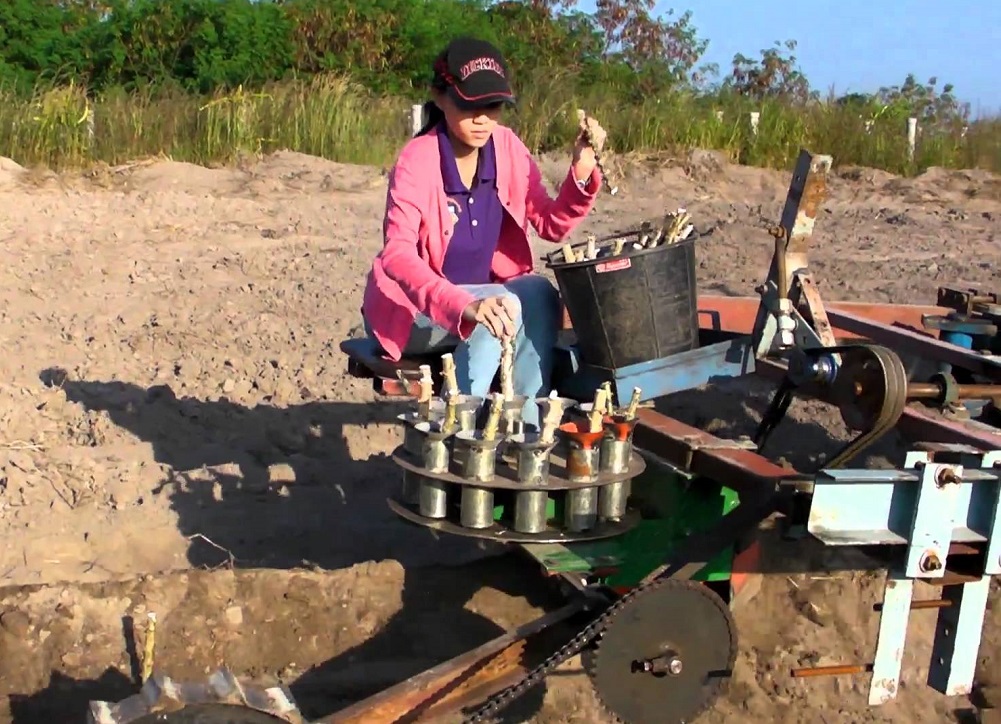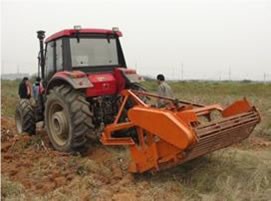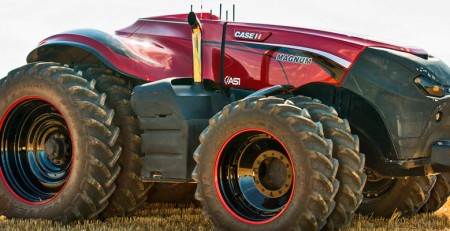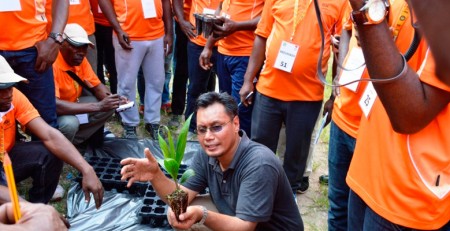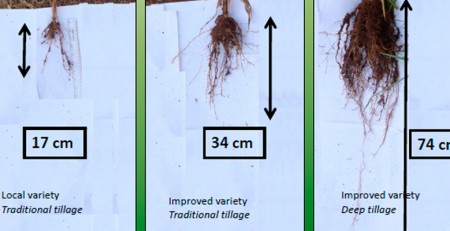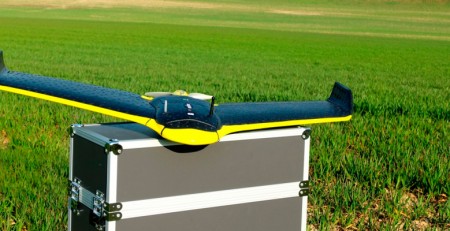Mécanisation des systèmes de production de manioc
Le manioc ou le manioc (Manihot esculenta) est une culture racinaire qui, peut-être à la surprise des gens en dehors des régions tropicales du monde, représente environ 30% de la production terrestre de cultures vivrières à base de racines et de tubercules; Bien qu’il existe un certain manque de mécanisation de la production de manioc. Cet arbuste ligneux pérenne se développe à une hauteur entre 1 à 3 mètres de hauteur, avec des feuilles palmées et des racines en forme de cône. L’amidon est stocké dans la racine et recouvert d’une écorce de papier et d’un cortex blanc-rose; Et la chair de la racine est une couleur jaune doux, à blanc vif.
Il existe plus de 5 000 variétés de cette culture de base, selon l’adaptation climatique et une large gamme de caractéristiques basées sur la qualité. Une espèce résistante, elle tolère le stress de la sécheresse remarquablement bien et se développe dans les types de sols plus pauvres que la plupart des cultures vivrières. Une caractéristique intéressante de son maquillage génétique est qu’il possède une forte symbiose avec des mycorhizes, champignons naturels de sols, conduisant à sa remarquable résistance et sa tolérance aux sols acidifiés et résistants aux intempéries. Il a également une capacité inégalée à se remettre de la pression des insectes et des maladies. Sa valeur dans les pays en développement du monde réside dans le fait que toutes les cultures vivrières se situent près ou en haut de la production de Hydrates de carbone par hectare.
En plus de cela, ce qui rend le manioc encore plus intéressant pour les agronomes et les nutritionnistes, c’est que les racines et les feuilles de la plante peuvent être toxiques lorsqu’elles sont consommées. C’est parce que la plante produit des composés contenant à la fois du cyanure et du glucose (glucoside cyanogène). Une fois que le tissu végétal est endommagé, ces composés libèrent le cyanure d’hydrogène (HCN), une toxine puissante (conduisant peut-être à sa résistance significative aux insectes et aux organismes pathogènes).
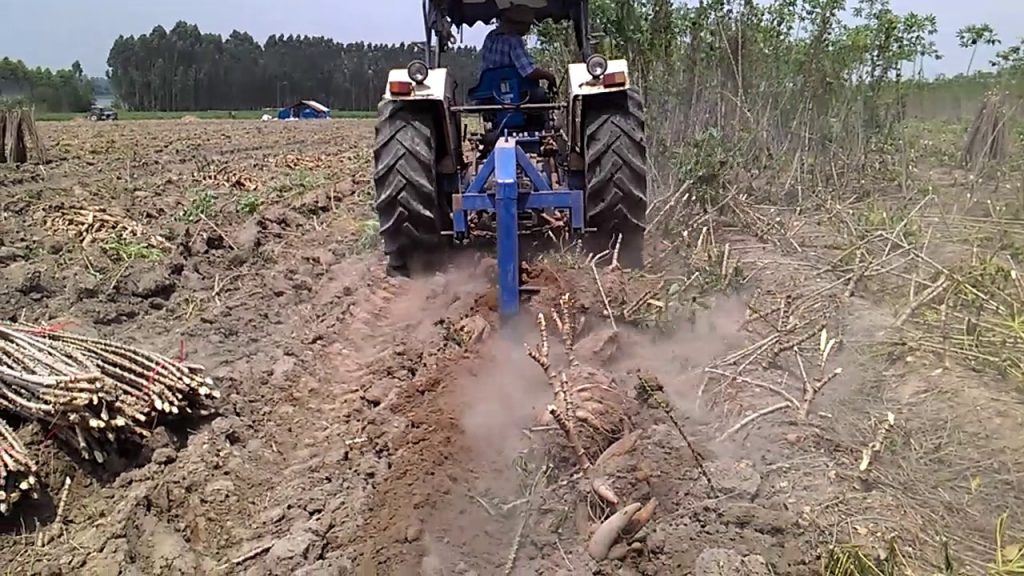
Specialized cassava harvesters come in different sizes and capacities, usually according to tractor horsepower rating and rate of work needed.
There are some varieties of cassava termed “sweet,” or low-cyanide cultivars which have lower levels of toxins in the flesh of the root, and can be cooked after peeling, just like other root vegetables. “Bitter” cassava varieties have higher levels of cyanide throughout the peel and flesh of the root and require more extensive processing before being safe to consume, including grating, fermenting, and sun drying. For reasons that don’t seem entirely clear, many farmers across the tropics prefer to grow high-cyanide varieties, whether their pest tolerance or yield characteristics, tradition, or some other reason(s).
Once the plant tissue is damaged, these compounds liberate hydrogen cyanide (HCN), a potent toxin (perhaps leading to its significant resistance to insects and plant disease organisms). There are some varieties of cassava termed “sweet,” or low-cyanide cultivars which have lower levels of toxins in the flesh of the root, and can be cooked after peeling, just like other root vegetables. “Bitter” cassava varieties have higher levels of cyanide throughout the peel and flesh of the root and require more extensive processing before being safe to consume, including grating, fermenting, and sun drying. For reasons that don’t seem entirely clear, many farmers across the tropics prefer to grow high-cyanide varieties, whether their pest tolerance or yield characteristics, tradition, or some other reason(s).
With efficient exporting and infrastructure development on the rise, agricultural equipment specifically engineered for cassava production is following suit. Typically grown by small-scale farmers using more traditional methods, and on marginal land where nothing else will grow; the adoption of mechanization has been slow to develop historically, but that could be changing.
Cassava is propagated by planting stakes cut from the stems of woody, mature plants. Planting is done prior to rain seasons so as to provide the necessary moisture during the first few months, but after that period, they are remarkably drought tolerant. Depending on climate and weather, the roots mature to harvestable size in 6-12 months; and the harvest season can last for up to 2 years after that point, adding to its value for subsistence food supply over a relatively long period of time.
Harvesting involves cutting off the top 75% of the plant, pulling the roots, and then separating them. The roots break down and deteriorate rapidly, so consumption or processing must soon follow.
Fresh roots of the “sweet” type (low-cyanide) cassava can be packaged in plastic, frozen, or sealed in wax to prevent deterioration. Typically, only the youngest leaves are picked, and generally, must be cooked the same day.
Mechanization of Cassava Production
Combining all these things to consider, tractors and attachments specifically engineered for cassava continue to evolve to assist farmers in countries of the tropics throughout the world.
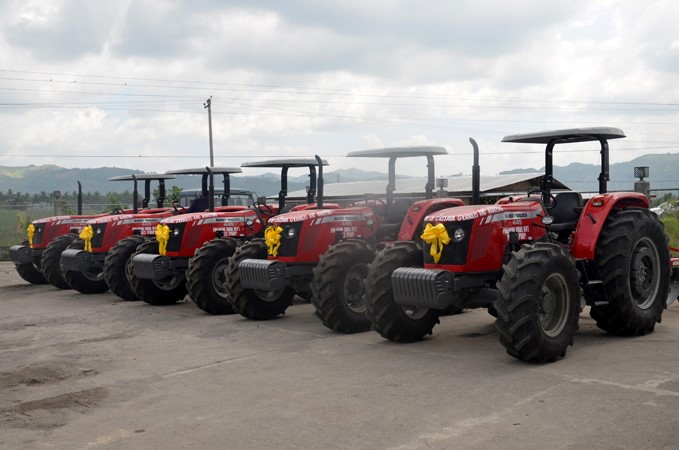
In the Philippine’s, a project funded by the Department of Agriculture’s Philippine Rural Development Project included these new tractors delivered to boost cassava production and marketing sectors in South Cotabato. Source: The Business Mirror: Tractors, machinery boost PRDP’s cassava project in South Cotabato
With more farms diversifying production across several crops, and communities working together toward shared benefit, the cost of a tractor can be spread across several crops at a time when tractor selection is done properly. If matched with production to scale of cassava, the attachments that can assist with tillage, cultivation, harvesting, and processing of this important crop can advance as well.
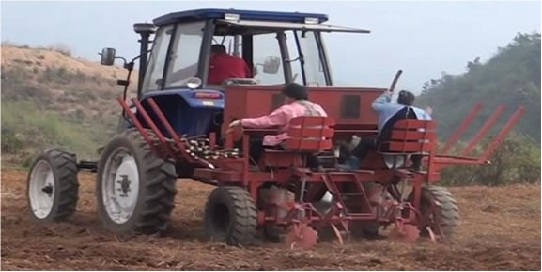
Here’s a photo of a 3-point hitch transplanting machine for planting cassava. Soil conditions at planting, equipment retro-fitting, and other factors need to be considered before matching up the proper tool for the job. Source: www.cassavamillers.com
There are several options for tillage and cultivation for this unique crop and its seasonality. Consult with your local equipment dealer, mechanic, or specialist to learn how to match up the right equipment for whatever needs you might have.
In closing, here’s an interesting video with several different pieces of equipment shown working in the field (I’m not a fan of the music etc, but I enjoyed watching the different field activities).
YouTube: new farming machines, cassava cultivation using modern machine, new agricultural technology
If you liked this article please help us by sharing on Facebook
Read more about it:
The Business Mirror: Tractors, machinery boost PRDP’s cassava project in South Cotabato
EQUIPMENT FOR MECHANIZED CASSAVA FARMING – Cassava Millers


